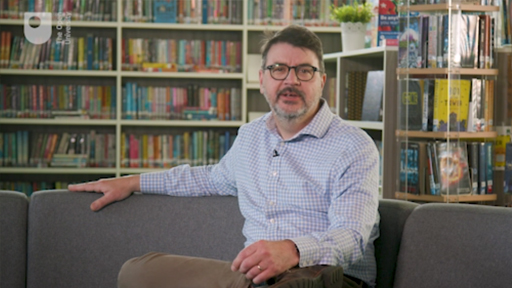1 Supporting your school with a library development plan
Libraries play a key role in schools. They are places where students come together and different interests overlap. For this reason, libraries are essential for the encouragement of learning and curiosity. Although such environments should naturally expose students to new perspectives and concepts, it’s also important that the library reflects and supports the unique policies, demographics and mission aims of your school. Whether a primary or secondary, state or independent, the location, size, demographic and nature of your school will shape its strategic direction. If your library is to be an integral part of your school, its provision must likewise be tailored to the school itself. Creating a library development plan will help you to stay aligned to your school’s mission and set out your vision for the library based on that.
A library development plan strategically outlines your priorities to raise standards and identifies the measures to achieve your goals. A typical library development plan will include a short introduction that summarises your previous year’s evaluation and sets out a rationale for any changes you intend to implement. This is usually followed by a table which presents a simplified outline of what you intend to achieve in the future, your strategies, the resources you’ll need, and the criteria by which you will judge your success. This should be presented in a simple format so it is easy to read and relevant parties, including senior leadership and school managers, can be made aware of the strategic direction of your library.
It is important not to be too ambitious when creating your development plan. You should set targets that are realistic and which provide motivation to staff. You may also wish to limit yourself to no more than three or four goals. If possible, it is preferable for your goals to be linked to your school’s overarching policies or strategies. However, this may not always be possible.
Watch school library professional, Nick, discuss some of the specific considerations to be accounted for when creating your library development plan in Video 1.

Transcript: Video 1
As Nick mentioned, understanding your school’s policies and familiarising yourself with their mission statement – a formal summary of its aims and values – is instrumental in creating a focused library plan which truly reflects your school’s values. Referring to the school’s teaching and learning policy, the literacy policy and, of course, the school’s wider development plan will help you do this. Thinking about the profile of the school community and the diversity of students, in terms of, for example, ethnicity and gender, as well the differing needs for those with English as a Second Language or with special educational needs and disabilities (SEND) is another important consideration.
It is usual, but by no means obligatory, for your development plan to cover a 12-month period. It is equally credible to have a two, three, of five-year development plan as some things will inevitably take longer to achieve. To begin considering how to approach a library development plan in your own school, take a look at this example template of a library development plan. After this, complete Activity 1.
An example template of a library development plan can be viewed here. [Tip: hold Ctrl and click a link to open it in a new tab. (Hide tip)]
Activity 1
Referring to the template library development plan for guidance, identify a goal for your library for the upcoming year. Then, using the prompt questions given below, explain how you will achieve your goal, what resources will be necessary, and how you will determine success.
Strategies: what specific actions will you need to do in order to achieve your goal?
Resources: what is required to implement your strategies?
Indicators of success/monitoring: how will you check progress so you know you are on track?
Discussion
If you found this activity useful, you may like to use it as a starting point for your own development plan, considering other goals you have identified for your library.
The advantages of a development plan include:
- it can help you to identify your goals, organise your thoughts, and think strategically
- when you come to evaluate your performance, the development plan can act as a point of reference, helping you assess which goals have been met and what still needs to be achieved
- it can be used as an ‘at a glance’ synopsis of your intentions and goals for any interested parties, e.g., your line manager.
In this section, you have explored some of the considerations involved in putting together a library development plan. This will form the base of your own plan. You will build on this base in future sessions, covering a range of topics which will influence your approach. Amongst other topics, you will consider how stakeholders influence collection management and the design of your library, how you can embed literacy in your school, and how to choose software which meets your requirements and budget. First, however, you will look in more detail at how legislation will influence your approach to your role.
